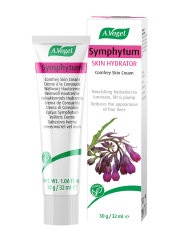The effects of ageing on the skin
I've been investigating the effects of ageing on the skin, to better understand the process that may begin as early as our twenties. 'Know your enemy!' seems a good starting approach when deciding on any sensible age-defying skin-care routine. So, let's take a closer look a some of the common signs of ageing skin, including what causes them and things to be aware of.
1. Fine lines and wrinkles
Loss of collagen and elasticity, slower skin rejuvenation and wear and tear all play a part in the formation of fine lines and wrinkles, the most visible signs of early ageing. Our laughter lines are formed the same way the fold on an old love letter becomes deeper, the natural consequence of use, and of smiling. Skin that has experienced the most exposure, for instance on our hands, will therefore be more wrinkled and weathered than the soft, protected skin on the inside of our arm. This will be more evident in areas with less protective padding, e.g., hands, which are often fairly boney.
2. Sagging
We lose connective tissue and collagen as we age - this is the stuff that gives our skin its stretch, flexibility and firmness. When this happens, the jawline becomes less defined, the neck slacker, and eyebrows may dip slightly, causing everything to look a little droopy.
Collagen is generated by cells called fibroblasts, which become less active as we leave our twenties, and plod on. From then, approximately 1-1.5% less collagen is produced every year(1).
Sagging doesn't just happen because the skin loses elasticity. The support structure of our face begins to change in our thirties; skin volume decreases because fatty deposits under the skin diminish. At the same time, bone mass (density) decreases as we mature. I found this out the morning I had to lift a mirror off a bed. The shock of seeing what looked like my face hanging off me – horrible but fascinating. The face of a person in their nineties is the result of looser skin draped over a smaller skeleton. Throw in a bit of gravity, and cheeks become flatter, the chin slightly recedes, and eye sockets become hollower. I remembered that one of 'The Golden Girls' had some very sage advice about never being on top!
3. Thinner, drier skin
Older skin can look fragile and transparent, because its weakened structure makes it less able to regenerate new skin cells and produce natural moisturising factor (NMF). The result is drier, frailer, thinner skin as damaged cells are not replaced. This may happen earlier than we think likely.
From the mid-twenties, sebum secretion starts to wane. This is good news in part, as regards pimple production - sebum is an oily substance that can block pores and cause blackheads. Ageing also decreases the lubricating skin component hyaluronic acid, the 'goo molecule'. Its function is to act as a moisturising magnet, trapping water in skin fibres to make them tougher and more resilient(2). Hormonal shifts, for instance - the drop in oestrogen as women reach menopause - can play an instrumental role in skin dryness.
4. Dullness
Ageing skin can look duller and less vibrant, as if it has lost its glow. This can happen for several reasons. The skin is completely regenerated and every cell replaced every six weeks or so(3). This is super-fast and efficient when we are young and bouncy; but by the time someone reaches their 60s, the process takes up to three months. So the outer layers of older skin may look dull because they have not been shed as quickly. Dehydration will amplify this effect, further dulling the skin. Think of the way an apple looks when it's been sitting there too long in the fruit bowl.
We are less active as we get older, and, without the muscles pumping, blood circulation that fuels our skin with oxygen and nutrients slows way down. So colder feet, less rosy cheeks and smaller quantities of vital nutrients and oxygen reaching the skin.
5. Skin pigmentation
Age spots, melasma, and cherry angiomas pop up as we get older, they usually start to appear in the thirties. Pigment-producing cells in the epidermis become less efficient, and both under- and overproduce melanin, the pigment that makes skin brown.
Sun damage plays a major role in most pigmented changes in the skin, but it's not the only skin risk factor. You can read more about these in my article 'What has the greatest ageing effect on skin?'
- Melasma (pregnancy mask) are flat, uneven, darker brown or greyish blotchy patches of hyperpigmentation. Hormonal changes such as pregnancy can trigger it, as can hormonal medications like the Pill.
- Liver Spots (also known as sun/age spots or lentigines), are flat, oval spots of darker skin ranging in colour from pink to dark brown/ black. They are usually bigger than freckles.
- Cherry Angiomas are harmless benign tumours made of little blood vessels. They can be raised and vary in colour from bright red to violet. I think these can look quite cute, like dashing freckles.
Caring for your ageing skin
Because older skin is thinner and dryer, it can be more sensitive. It's not uncommon for people to reach their forties and, all of a sudden, find they can't wear their favourite jumper – it's too itchy! Mascara can have you in tears, and your deodorant leaves a rash. Ideally, skincare should not contain any harsh or abrasive chemicals.
Need help reducing the appearance of fine lines and wrinkles? Our Comfrey Cream is rich in active natural compounds that promote collagen, as well as protecting and nourishing ageing skin.
There are lots more things you can do to help care for your ageing skin. Learn more in my blog 'How can I treat my ageing skin naturally?'









